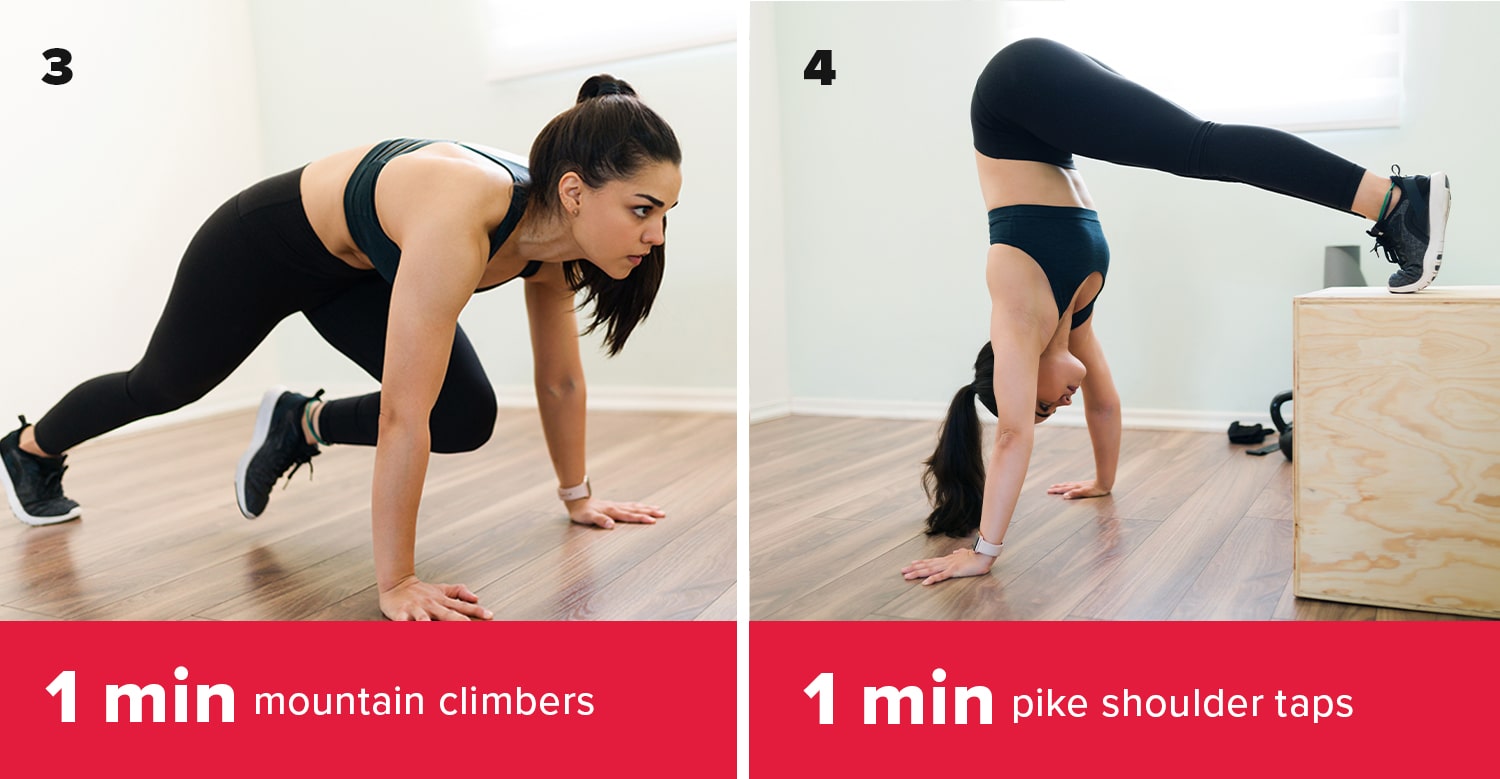We test and review fitness products based on an independent, multi-point methodology. If you use our links to purchase something, we may earn a commission. Read our disclosures.
We know some of you may be thinking, “It’s easy for them to stay active during the day, they work out for a living.” Firstly, that’s only partially true, but secondly, there are some of us who may not be getting enough daily physical activity.
No, we’re serious.
While regular workouts are important to our overall health, they won’t do much if we spend the rest of the day just sitting down. Yet that’s exactly what a majority of Americans are doing, according to most health experts. Multiple studies have found that sitting for more than 8 hours a day poses a similar health risk as smoking cigarettes.
This may seem shocking, especially if you’re someone who has to work at a computer for long periods of time (whether in an office or on your living room couch). But there’s some good news: you don’t need a second rigorous sweat sesh to be considered physically active.
There are many small, yet effective ways to remain active that won’t disrupt your workflow and keep you active throughout the work day. You may also see some mental health benefits, such as decreased stress and more natural energy, in addition to the physical ones.
In this article, we’ll give you seven ways to remain active during the day, and how doing so can benefit your health.
7 Ways to Stay Active During the Work Day
#1 Get Your Stretch On: Try these Subtle Movements During Your Next Zoom Meeting
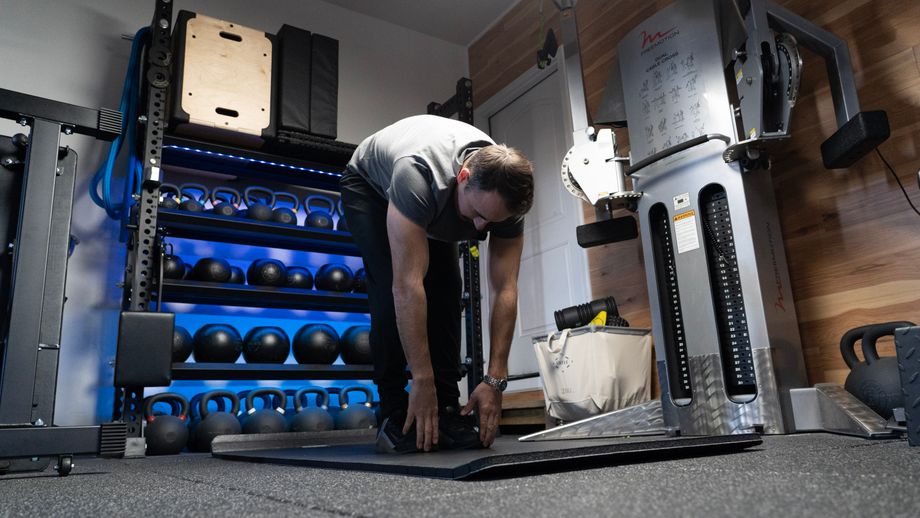
Besides putting you at-risk for some health conditions, sitting for too long can also increase your chances of arthritis and lower-back pain–especially if you have poor posture (we see you straightening up). There have also been studies that show prolonged sitting could cause you to lose some bone density, and cause muscle atrophy (the loss of muscle tissue).
One of the easiest, and most effective ways to counteract this is to simply stretch. Researchers found that static stretching (where you move one muscle as far as it will go and hold it there for 30-60 seconds) can help reduce lower-back pain, and there have been others that show it may improve sleep and circulation in some people.
Lastly, stretching can increase your muscles’ range of motion, or how far you can move it, which can benefit you during your weightlifting workouts as you’ll be able to perform more moves with less pain and help prevent injuries.
Here are a few stretches you can perform at any point during the work day. Hold each for 30-60 seconds, and perform as many as possible (you can even do them multiple times).
- Upper-back Stretch: With your feet a little more than shoulder-width apart and knees bent, interlock your fingers and push your hands as far away from your chest as possible.
- Shoulder Stretch: With your feet a little more than shoulder-width apart and knees bent, place one arm across your chest and parallel with the ground. Use the other forearm to pull the first one toward your chest. Repeat on the other side.
- Quadricep Stretch: With your feet shoulder-width apart, lift one foot off the floor (holding onto something for balance if needed) and use your hand to pull it toward your glutes. Keep your posture straight. Repeat with the other leg.
- Hamstring Stretch: Lie flat on your back, and pull your thigh toward your chest (you can use your hand, or a towel if you find you can’t get your leg far enough).
- Chest Stretch: Place your hands behind your back and squeeze your shoulder blades together (this one can also be done while sitting down).
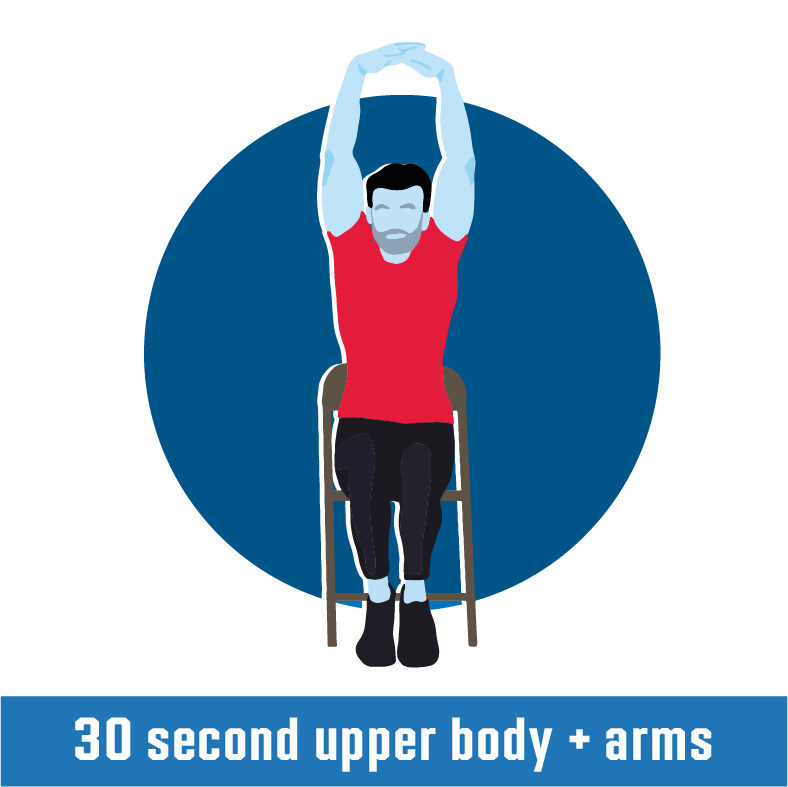
- Lower-back Stretch: While sitting down, use your hand to bring your knee toward your chest while keeping your back straight. Repeat with the other leg.
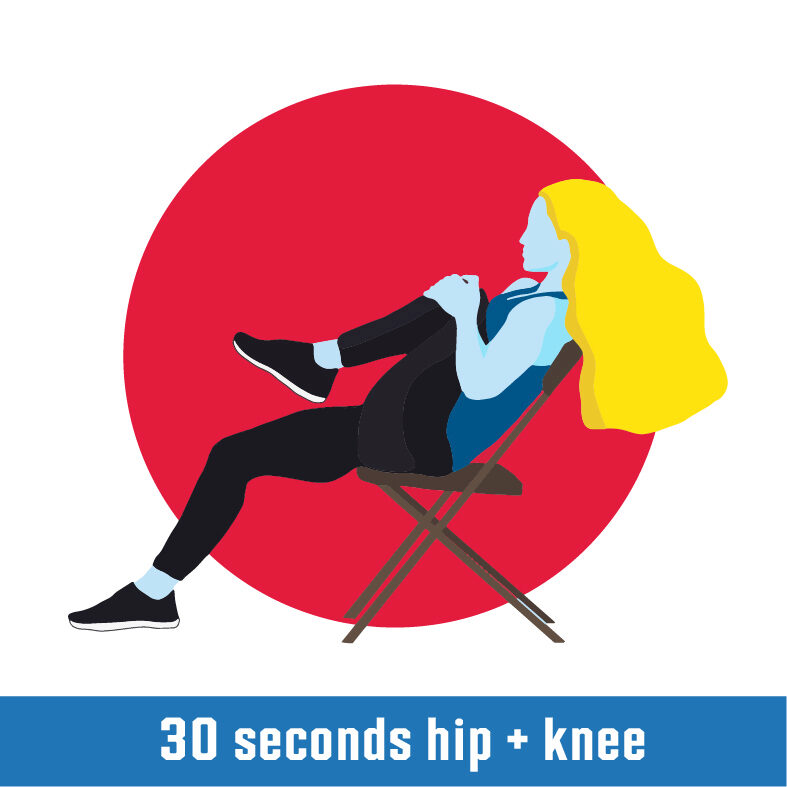
#2 Try Micro Workouts Throughout the Day
Micro-workouts are exactly what they sound like–workouts done in small doses. They can last anywhere from 1 to 10 minutes, and don’t necessarily have to be sweat-inducing (but we’d still pack an extra deodorant stick just in case). It’s just about getting the body moving.
One study found that women who climbed stairs at a fast rate three times a day for just 20 seconds a session saw significant improvements in their cardiovascular health.
Here’s a quick micro-workout you can modify to your space and time constraints. Ideally you’d want to do each for 30 seconds, then rest for 30 seconds, before moving onto the next one but again you can change that to 10 seconds each if needed (remember that some movement is better than nothing at all).
- Move 1: Burpees (modify: no push-up burpee | advanced: burpee to target)
- Move 2: Walking lunges (modify: reverse alternating lunges | advanced: jumping alternating lunges)
- Move 3: Mountain climbers (to modify or make it advanced, adjust your speed)
- Move 4: Pike shoulder taps (modify: plank shoulder taps | advanced: handstand shoulder taps)
- Move 5: Jump squats (modify: air squats | advanced: squat to box jump)
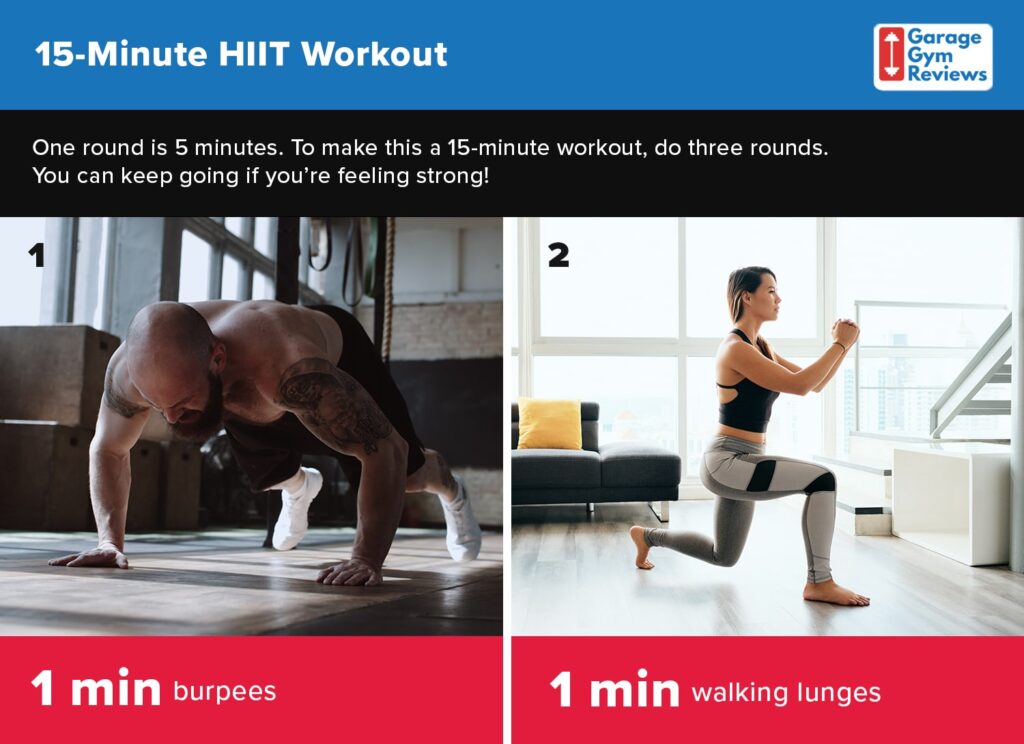
#3 Set a Reminder to Get Up and Move
Sometimes you get super-involved in a project, and all of a sudden the only thing you can think of is what’s in front of you. That may or may not have happened to this writer as he was putting the finishing touches on this story.
There are many ways to ensure you don’t get stuck in a productivity vortex and forget to make time to move, such as setting a timer on your phone or fitness tracker for every hour to take a five-minute break.
Another method we recommend is the Pomodoro technique, which may also help you become a more productive person in general. Here’s how it works:
- Write down a list of tasks you need to get done
- Set a timer for 50 minutes, and solely focus on that first task
- When the timer goes off, take a 10-minute break. During this time you can do some physical activity
- At the end of your break, go back to your tasks
- Repeat
- Add in a 20-minute break after completing every four tasks
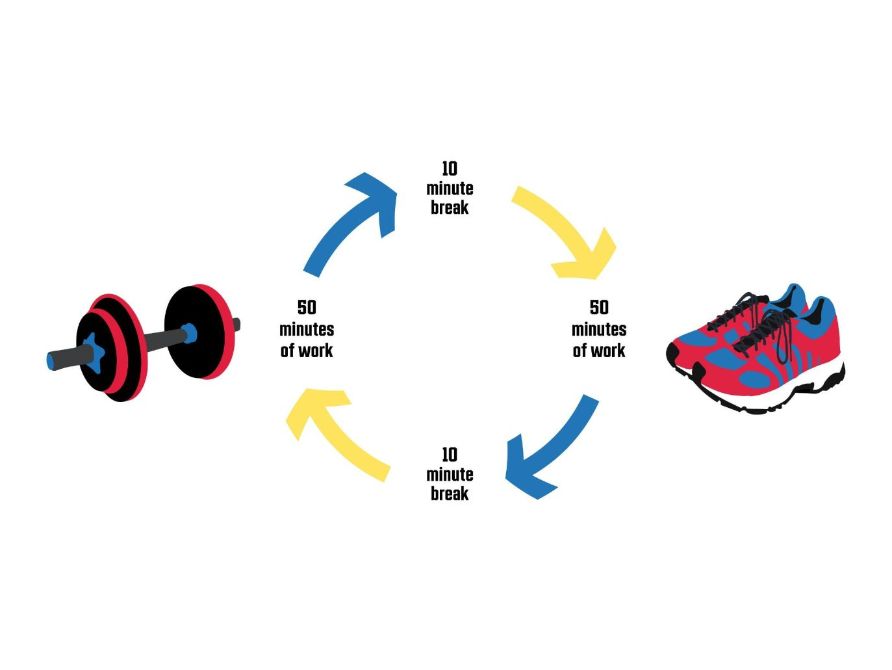
You can make this technique your own by setting a longer timer, or taking longer breaks if needed.
#4 Consider Purchasing Basic Equipment to Keep Yourself Moving
It can be hard to get to the gym during the work day, so why not bring the gym to you? No, you don’t have to bring an entire weight set to the office (though that’d be pretty cool).
This can be something like an under-desk treadmill or an exercise bike, or a treadmill desk. I personally have a folding exercise bike that has a laptop stand that I use during some Zoom meetings. I make it a point to pedal for the entire meeting, sometimes at a leisurely pace and sometimes I up the resistance a little bit if I’m looking for a challenge.
RELATED: Stationary Bike vs. Treadmill
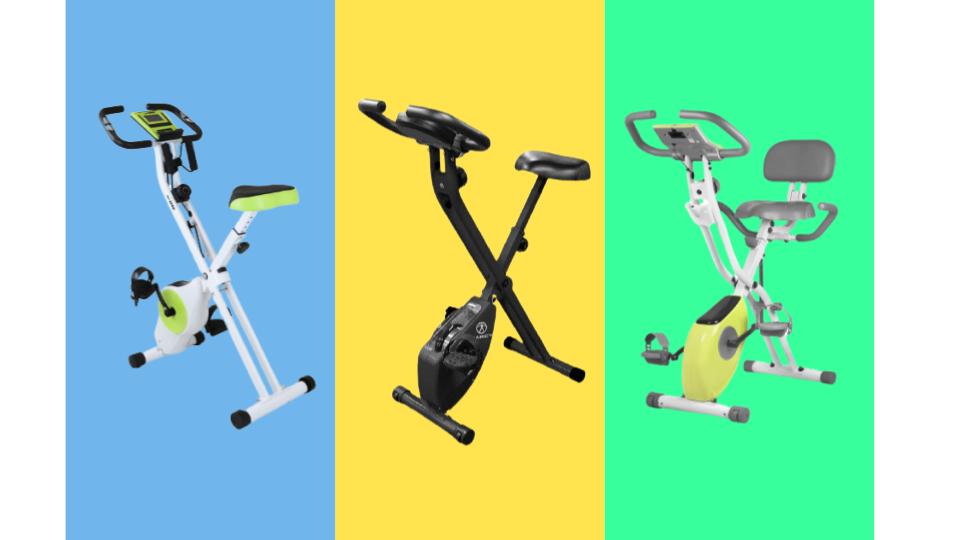
But don’t limit yourself to just traditional exercise equipment. A standing desk is a great way to promote movement (you can lunge in place in between emails), as is replacing your traditional office chair with something like a medicine ball chair (which will challenge your core and enforce proper posture).
Bonus tip: Check to see if your employer will reimburse you for part or all of the cost of a piece of equipment you have your eyes on.
#5 Move During Your Break
Physical activity may not seem like the most enticing thing to do on your well-deserved break, but again it doesn’t have to be anything strenuous. Have an hour for lunch? Take 30 minutes to take a walk outside (or down a few flights of stairs if the weather isn’t cooperating).
But you also don’t have to wait until your break to get some steps in. If you have a one-on-one meeting, suggest that you turn it into a walking meeting if you’re in person. For those who work remotely, try participating in the call from your phone and taking a walk (even if it’s just around your home).
This was something I’d frequently do during my days as a reporter when I had a call with a source that I knew would take a while. After a few weeks of doing that, I noticed my cardiovascular endurance improved significantly.
RELATED: Best Treadmill for Walking
#6 Don’t Forget Recovery
We’ve all heard that “too much of a good thing can be bad,” and that goes for physical activity as well. Not only could it drain your energy levels, making it harder to remain active, but it could also increase the amounts of stress hormones in your system, which affects things like sleep and mood.
Dedicate some of your breaks to doing some breathing exercises, making yourself a cup of tea, or calling a friend for a quick chat.
#7 The Easiest One: Fidget
Yup, you read that right. Fidgeting your fingers or even tapping your feet can help you burn hundreds of calories per day. Just try to find a method that won’t annoy your co-workers.
“I already worked out this morning, why do I need to continue moving during the day?”
We’re glad you asked! The Centers for Disease Control and Prevention says adults need to do two types of physical activity every week to keep their health in check: muscle-building and aerobic activity.
Muscle-building can be any form of resistance training, and it should be done at least twice a week and target all muscle groups. This can be CrossFit, powerlifting, bodyweight training, or Olympic weightlifting.
Aerobic activity is any form of cardiovascular exercise, from walking to running, and there are three ways to achieve your weekly goal: 150 minutes of moderate-intensity activity, 75 minutes of vigorous-intensity activity, or a mixture of the two.
Reaching these goals are the best ways to prevent arthritis, Type 2 diabetes, stroke, heart problems, and other diseases.
It should be noted that you can get the same health benefits from splitting up your workout into smaller chunks throughout the day as you would doing it all at once, according to the CDC. Doing this can also help you engage in what’s known as intuitive movement, or moving in a way that feels natural for your body when you feel like it.
In other words, if you want to get up and stretch your legs you don’t have to wait for an excuse to do it–just get up and walk. And if you don’t want to at a particular moment, don’t.
There aren’t many studies on intuitive movement, but it has been endorsed by many personal trainers and physicians as a way to get people to remain physically active. Daniel Lieberman, an evolutionary scientist at Harvard University, also says it’s more in-line with how humans have moved for thousands of years.
“When people don’t exercise, we label them as lazy, but they are actually doing what we evolved to do–which is to avoid unnecessary physical activity,” Lieberman told The Irish Times.
Our distant ancestors were more active than us, but only because they needed to be. They were either moving to a new camping ground, or hunting a giant wooly mammoth for food. They wouldn’t start pressing logs above their heads when it wasn’t required, since they needed to conserve energy for when it really mattered.
Lieberman adds that movement is still necessary for our everyday health and survival, as it was back then. “We evolved to be physically active,” he says in the same article. “It is important for almost every system in the body.”
I honestly think you’ll see more people gravitate toward intuitive movement in the future. An exercise routine can be great for those who need guidance, but there are those who may not want to do the same thing over and over again. It’s similar to a child who refuses to eat broccoli–it’d be better to find a vegetable they do like, rather than struggling to get them to eat the one they hate.
How the Garage Gym Reviews’ Community Stays Active Throughout the Work Day
Still need some ideas on how to remain active during your work day? We asked some of the best people we know–our readers–what they do while at work to keep themselves moving.
Tabata workouts are 4-minute HIIT-style routines with 20 seconds of work and 10 seconds of rest. So you would do 20 seconds of air squats, rest for 10 seconds, and repeat until your 4 minutes are up.
Our Takeaway
Anyone who’s spent more than a minute on the fitness side of the internet has heard they probably have to do specific exercises for a set amount of time to get their desired results. That might be true under some circumstances, but if your goal is to become a generally healthier person then just know that some movement is better than nothing at all.
This can be done through 5-minute walks, some quick stretches, or even just standing at your desk for a few minutes a day. A little bit goes a long way, and if you find a system that works for you you’re more likely to stick to it rather than forcing yourself to go through a grueling regimen you don’t look forward to.
Further reading

We know some of you may be thinking, “It’s easy for them to stay active during the day, they work out for a living.” Firstly, that’s only partially true, but secondly, there are some of us who may not be getting enough daily physical activity. No, we’re serious. While regular workouts are important to our overall health, they won’t do much if we spend the rest of the day just sitting down. » Read more about: Getting a Move On During the Work Day: 7 Ways to Stay Active During Your 9 to 5 » Read more

We know some of you may be thinking, “It’s easy for them to stay active during the day, they work out for a living.” Firstly, that’s only partially true, but secondly, there are some of us who may not be getting enough daily physical activity. No, we’re serious. While regular workouts are important to our overall health, they won’t do much if we spend the rest of the day just sitting down. » Read more about: Getting a Move On During the Work Day: 7 Ways to Stay Active During Your 9 to 5 » Read more

Want to find a great commercial treadmill? Check out our Life Fitness treadmill reviews for the full scoop on these five durable models. Read more

Effectively dosed and enriched, but is it too good to be true? Read our Purely Inspired Collagen Peptides review for expert insights and learn if it suits you. Read more

